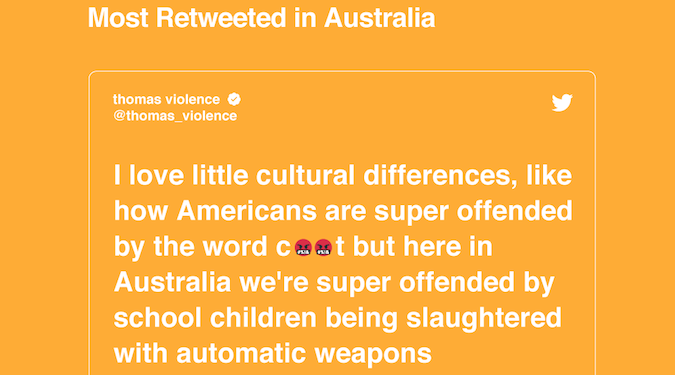Book Review: Tweet Cute - PPLD.org


Tweet Archiver - Google Workspace Marketplace
Little Known Questions About Tweet Cute by Emma Lord - Goodreads.
< Research It Here ="p__0">A total of 69 full-text posts were assessed for eligibility. Of these, 15% (10/69) were declined since they took a look at social networks in basic (not Twitter specifically), for example, using social media by surgical colleagues [] Additionally, 36% (25/69) were rejected because the research study did not relate to healthcare, for example, public perceptions of nonmedical use of opioids []

2020 In Review: Top 10 Tweets - University of Maryland Athletics
The criteria used to compare the approaches in each study looked at the technique of tool production, in which setting it was utilized, and the method of testing the tool. For assessment, a comparison of the number of annotators utilized to by hand annotate tweets, if any, and the level of contract between them was used.
Outcomes, Overall Results, In overall, 12 documents were found that satisfied all 3 addition requirements (see for overview). These were released between 2011 and 2016 with data gathered from Twitter between 2006 and 2016. Moreover, 2 papers taken a look at global data, 9 in the United States, and 1 in the UK.
College Admissions Officers Are Reading Your Tweets - The Fundamentals Explained
Many studies conducted analysis on public healthrelated subjects (n=7). In addition, 3 papers took a look at the belief toward an element of illness: the illness itself (n=1), symptoms (n=1), or treatment (n=1). Lastly, 2 documents studied an emergency situation medical scenario and a medical conference. An overall of 5 of the 12 studies conducted a manual belief analysis of a sample of their information utilizing annotators to train their tool.
58% (1000/7362) of their last information sample to train their established approach [] Three research studies utilized an average of 0. 7% of their overall dataset to train their tool (1. 46%, 250/17,098; 0. 55%, 2216/404,065; and 0. 1%, 250/198,499). One paper compared the accuracy of their selected approaches with a manually annotated corpus of their data []
There were 3 classifications of belief analysis approaches found (see ), a tool particularly produced and trained for that research study information, open source tools, and commercially offered software application. This difference was made based on the required level of competence in computer system programming needed to carry out that technique and if predefined lexicons were utilized.

